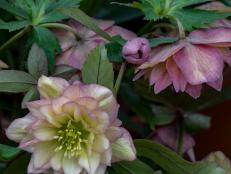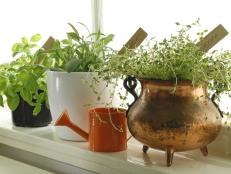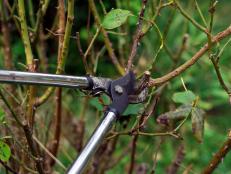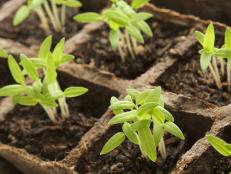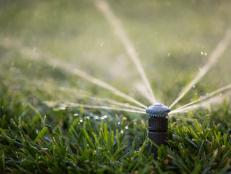Protect Plants With Row Covers
When frost creeps in, it's row covers to the rescue.

Image courtesy of Gardener's Supply Company

If we spot bugs or diseases in our gardens early enough, we can usually react fast and save our plants. But the first frost of winter does its dirty work overnight. We wake up to find yesterday’s vibrant marigolds, healthy tomatoes, and other tender plants have turned into mush with blackened leaves and shriveled stems.
While frost actually sweetens the taste of some edible crops, such as turnips and collards, it’s the kiss of death for others. If the frost is very light, or your warm-season plants are partially protected, they may survive and grow a little longer. But to extend the growing season as long as possible, you’ll need row cover.
Row cover is a material used to protect plants from wind and cold temperatures. It can also be used to guard against insect pests during the growing season or to shield plants from intense sunlight.
As we move from fall into winter, it’s a good idea to have row cover ready to put up before the first expected frost of the season. Because it provides a few degrees of protection from falling temperatures, you may be able to keep harvesting your edibles or enjoying some flowers for several more weeks.
Pre-made synthetic row cover is available in different weights, so you can choose the amount of protection you need. It’s typically made of woven or sun-bonded materials.
If you prefer, simply use sheets of plastic to cover your plants. You’ll need to provide ventilation by cutting slits in them or removing them when the temperatures rise. Heat can build up under the plastic, especially if it’s black, killing or damaging the plants it’s supposed to be protecting.
For best results, suspend the plastic over your plants so it doesn’t touch them, using hoops made of PVC, metal, wire, plastic, or wood or substitute other supports.
Floating row cover is another option. Made of landscape fabric, it appears to “float” above your plants, but it’s actually held up by the same kind of hoops or other supports you’d use for plastic sheeting. It’s designed to allow some air, water and light to penetrate, so you don’t have to take it off every time the sun pops out.
To keep the wind from blowing your row cover or plastic sheeting away, anchor them with bricks, boards or rocks, or cover the edges with soil. You can also use plastic bottles filled with water as weights, or buy reusable row cover, pins or tacks. If your cover is resting on hoops, but threatens to sail off on windy days, use clothespins to hold it down.
When a killing freeze arrives, shake any dirt or debris from the row cover and store it away to use next growing season. Be aware that some covers will tear or puncture easily, so handle them carefully.
When you’re ready to start your spring garden, get a jump on planting by bringing out the row cover again, this time to protect your transplants or seedlings. Be sure to take it off when your plants start flowering, so bees and other pollinators can reach the blooms.






